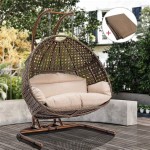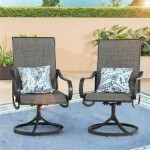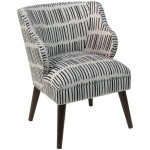Colonial Style Dining Room Chairs
Colonial style dining room chairs evoke a sense of history and timeless elegance. They represent a blend of European influences, adapted and refined over centuries in various colonies across the globe. Understanding the nuances of these styles can help discerning homeowners select pieces that complement their existing décor and create a dining space that exudes both comfort and sophistication.
Key Characteristics of Colonial Style Chairs
Colonial furniture styles often reflect the specific European country that established the colony. Common characteristics include solid wood construction, typically in mahogany, walnut, cherry, or maple. The wood is often stained in rich, dark tones, showcasing the natural grain. Upholstery choices vary but frequently feature durable fabrics like linen, cotton, or leather in muted colors or classic patterns.
Carving is another prominent feature, ranging from intricate detailing to simpler, more rustic designs. Chair backs often feature decorative elements, such as splats, spindles, or shaped crests. The overall silhouette of the chair tends to be formal and upright, reflecting the more formal dining customs of the past.
Finally, colonial style chairs often prioritize durability and practicality. These pieces were built to last, reflecting the values of the era. While aesthetically pleasing, they were also designed for everyday use and often feature sturdy construction that can withstand generations of family meals.
Popular Colonial Styles
Several distinct colonial styles exist, each with its own unique characteristics. American Colonial chairs often showcase simpler lines and less ornamentation than their European counterparts. They often feature turned legs and ladder backs, reflecting the practical and utilitarian nature of early American life.
British Colonial designs, on the other hand, tend to be more ornate, often incorporating intricate carvings and decorative elements. They may feature cabriole legs, claw feet, and upholstered seats and backs for added comfort and elegance. Mahogany was a popular wood choice, reflecting the British Empire's access to this prized material.
Dutch Colonial style chairs are characterized by their sturdy construction and simple, unadorned designs. They often feature rush seats and straight legs, reflecting the practicality and functionality favored by Dutch settlers. Maple and oak were common wood choices.
Spanish Colonial chairs often incorporate Moorish influences, resulting in distinct design elements. They might feature intricate geometric patterns carved into the wood, along with turned legs and leather or woven seats. Dark woods like walnut and cedar are frequently used.
French Colonial style often incorporates graceful curves, intricate carvings, and caned or upholstered seats. These chairs often have a lighter, more airy feel than other colonial styles. They frequently feature cabriole legs and delicate detailing, reflecting the French emphasis on elegance and refinement.
Choosing Colonial Style Dining Room Chairs
Selecting the appropriate colonial style dining chair requires careful consideration of the existing dining room decor. The style of the dining table should be taken into account; a heavily carved table might pair well with simpler chairs to avoid overwhelming the space, while a more streamlined table could benefit from chairs with more ornate detailing.
The size and scale of the chairs are also important factors. Chairs should be proportionate to the table and the overall size of the room. Larger rooms can accommodate more substantial chairs, while smaller spaces may require more delicate pieces.
Upholstery choices should complement the overall color scheme of the room. Neutral fabrics like linen or cotton can create a timeless look, while bolder patterns or leather can add a touch of drama. Consider the level of formality desired for the dining space when making upholstery selections.
Finally, the practicality of the chairs should be considered. Families with young children may opt for more durable fabrics and finishes. The ease of cleaning and maintenance should also be factored into the decision-making process.
Integrating Colonial Style Chairs into Modern Homes
Colonial style chairs can seamlessly integrate into modern homes, adding a touch of classic elegance and warmth. Mixing and matching different colonial styles can create an eclectic and interesting look. Pairing colonial chairs with a more contemporary dining table can create a visually appealing contrast, blending old and new.
Accessorizing the dining space with complementary elements can further enhance the colonial aesthetic. Rugs, curtains, and lighting fixtures can all contribute to a cohesive and inviting atmosphere. Consider incorporating natural materials, such as wood and woven textiles, to enhance the sense of warmth and history.
Ultimately, the goal is to create a dining space that reflects personal style and creates a comfortable and inviting atmosphere. Colonial style dining room chairs, with their timeless appeal and enduring craftsmanship, can play a significant role in achieving this goal.

Colonial Dining Room Inspiration Timeless Elegance For Your Home The Everyday Farmhouse

Colonial Christmas Decor Ideas

Colonial Style Senior Living Aluminum Arm Chair

Colonial Dining Room Decor Ideas

Dining Chair Styles Guide Types Chart

Primitive Colonial Sitting Room Stock Photo Download

Tropical British Colonial Style Add Different Chairs To Mahogany Dining Room Set Create This Look Hmmm

Soloman Chair Colonial Set Of 2 Western Passion

Huntington Colonial Dining Set Countryside Amish Furniture

Colonial Style Croma Lacke








